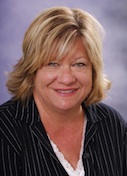Dr. Darla Vale, Dean of Health Sciences provides a newsletter update for the School of Health Sciences.
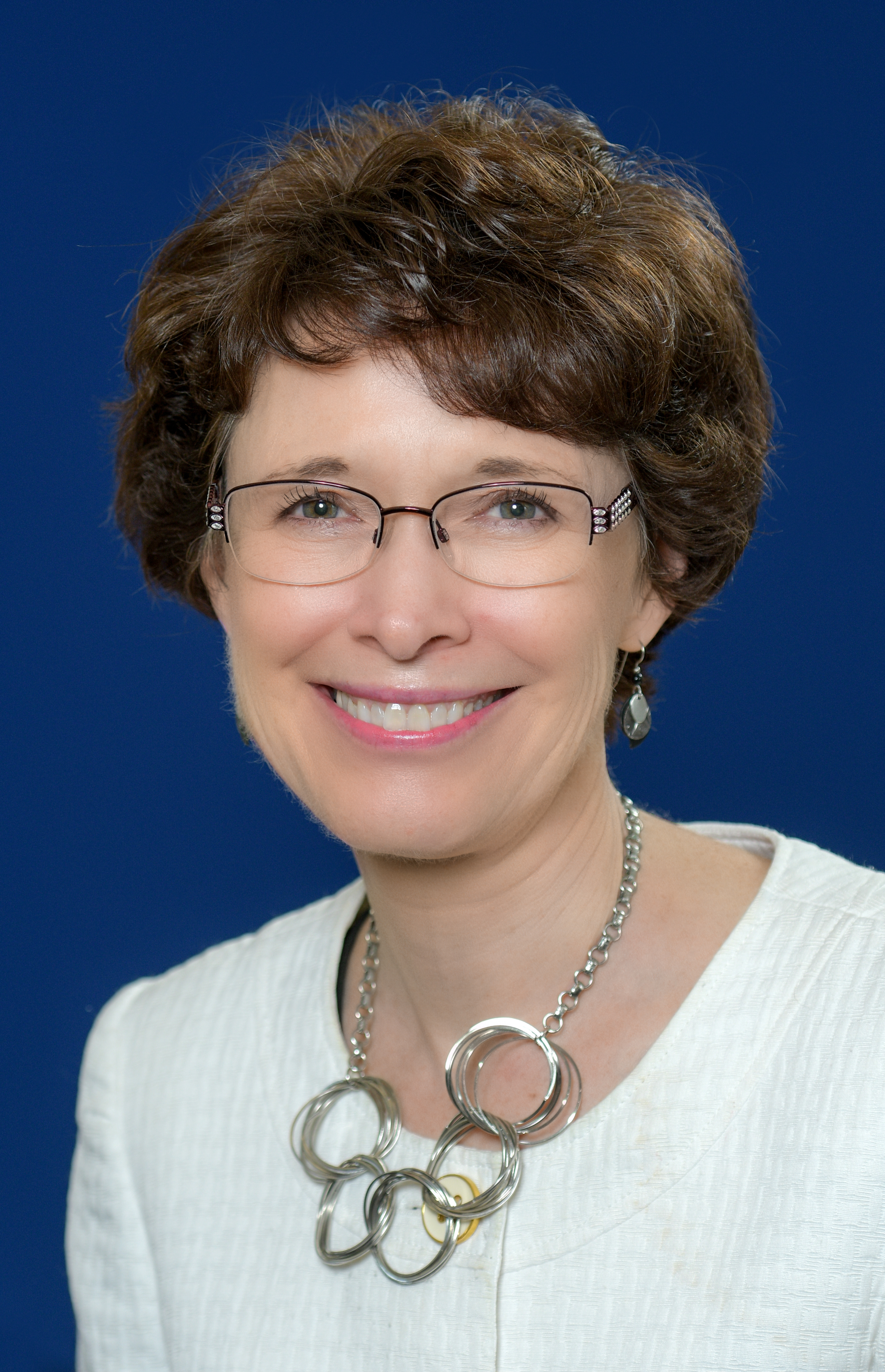
It is with optimism and gratitude that I write this message. The last 20 months (which seem like 5 years) have been challenging on many levels as we experienced a world turned upside-down. Our “new normal” is being built upon what we have learned and enriched by the sacrifices we have made.
Despite the turbulent times, the School of Health Sciences has continued to move forward to prepare competent, compassionate healthcare providers. Our new Health and Exercise Science major began this fall and has the second highest number of Freshman majors in the university, trailing our BSN program by only a few. Our PA program, who graduated their second cohort last May, is busy seeking continuing accreditation from the ARC-PA this fall. The Department of Speech, Language, and Hearing Sciences is continuing the development of the Masters in Speech-Language Pathology program. Approval has been received from the Ohio Department of Higher Education (ODHE) and the Higher Learning Commission (HLC). Specialty accreditation from the American Speech-Language-Hearing Association (ASHA) is being sought now. Our plan is for a Fall start in 2023. Stay tuned!
We are excited to explore and plan for the future, recognizing that we need to be flexible, thoughtful and ever mindful of what we experienced as a society, as a university and as individuals throughout these last 20 months.
![]()
Dr. Darla Vale
Dean of the School of Health Sciences
Notes from the Assistant Dean
From Department of Nursing faculty, staff and students, to nurse alumni employed in local healthcare settings, and other Ohio deans and directors of nursing schools, the message is the same. Nurses are working hard and feeling the pinch of diverse patients in need of care and limited resources all around. Nursing faculty at MSJ, after welcoming students back to campus this fall, quickly realized that back to normal is not enough. Our nursing students too need more…resources, support, and reassurance that we are on top of our game and working towards graduating nurses who are compassionate, aware of the needs of diverse patients, and ready to begin to provide safe and effective patient care. One example of upping our game is with the recent award of a $199,600 grant from the Ohio Board of Nursing to MSJ Nursing to increase enrollment in our MSN program with a focus on recruiting more diverse students and modifying our curricula to be more inclusive of diverse population needs. We look forward to the work this will entail and the results on patient care.
If you have been a nursing student at MSJ during the past 29 years, you probably have a favorite class memory related to Dr. Susan “Sue” Johnson. Sue retired last May after a stellar career as a nursing faculty member. We will be hard pressed to find anyone with her same knowledge, humor, and compassion. You are likely to bump into Sue on a boat, with her granddaughter, or doing some power shopping. Enjoy Sue!

Dr. Nancy Hinzman
Assistant Dean of Nursing, MSJ
MINDFULNESS IN THE WORKPLACE
The current literature points out that a substantial amount of the nation’s workforce is suffering from stress-related medical conditions, including anxiety, burnout, and mental illness. On a physical level, these problems can diminish the quality of life of an affected individual, and decrease workplace productivity, which can lead to economic loss for the employer (Khoury et al., 2013).
Interestingly enough these problems seem to stem from workplace conditions, increasing job demands, and lack of mental and physical resources available to employees. As a result, businesses are looking for ways to support their employees’ mental health and supply them with the necessary tools that can help them cope during times of heighted stress (Kersemaekers et al., 2018).
One strategy that has been found to reduce stress and anxiety and improve cognitive performance in the workplace is mindfulness. Mindfulness is a skill where individuals intentionally pay attention in the present moment (Kersemaekers et al., 2018). Examples of mindfulness activities and exercises include mindfulness meditation, walking meditation, pausing meditation, and compassion meditation. Often mindfulness can be done in as little as ten minutes per day, and exercises can easily be found on mobile phone applications (Ackerman, 2020).
3-Step Quick Mindfulness Activity (Ackerman, 2020)
1. Step out of auto-pilot and bring awareness to what you’re doing by pausing and taking a comfortable position with your eyes closed.
2. Bring awareness to your breathing by intentionally focusing on six breaths.
3. Expand awareness outward to the environment by noticing sensations such as tightness, aches, or perhaps a lightness in your shoulders or arms. If your eyes are open notice the colors, shapes, and patterns of the objects you can see.
What Does the Evidence Say?
According to a non-randomized pre–post evaluation study, “preliminary data suggests that mindfulness is associated with greater reductions in burnout and perceived stress, improvements in mindfulness, well-being, and increases team and organizational climate and personal performance” (Kersemaekers et al., 2018, para 4). Future field studies looking at the effects of mindfulness, with more rigorous designs, should be employed, such as Randomized Controlled Trials (RCTs) (Kersemaekers et al., 2018).
Reference
Ackerman, C. (October 16, 2020). 22 Mindfulness exercises, techniques and activities for adults. Positive Psychology. https://positivepsychology.com/mindfulness-exercises-techniques-activities/
Kersemaekers, W., Rupprecht, S., Wittmann, M., Tamdjidi, C., Falke, P., Donders, R., Speckens, A., & Kohls, N. (2018). A workplace mindfulness intervention may be associated with improved psychological well-being and productivity. A preliminary field study in a company setting. Frontiers in Psychology, 9, 195. https://doi.org/10.3389/fpsyg.2018.00195
Khoury, B., Lecomte, T., Fortin, G., Masse, M., Therien, P., Bouchard, V., et al. (2013). Mindfulness-based therapy: A comprehensive meta-analysis.Clinical Psychology,33, 763–771. https://doi.org/10.1016/j.cpr.2013.05.005
2021 DNP ALUMNI PRESENT AT THE FULD INSTITUTE EBP NATIONAL SUMMIT
Mount St. Joseph University DNP-prepared nurses are well-equipped for advanced nursing practice roles and responsibilities. The 2021 MSJ DNP graduates represent a variety of nursing specialties. They each possess the leadership, determination, and professionalism required to reach the highest level of nursing education with a focus on nursing practice, the Doctor of Nursing Practice (DNP) degree.
Three of the 2021 MSJ DNP alumni were selected for a peer-reviewed podium presentation at this year’s Fuld Institute EBP National Summit. The Fuld Institute for Evidence-based Practice (EBP) is a national hub for the formation, teaching, and dissemination of best practices to improve health care quality, safety, costs, and patient outcomes. Each of the three alumni presentations highlight their EBP projects completed while obtaining their degree in MSJ’s DNP Health Systems Leadership program.
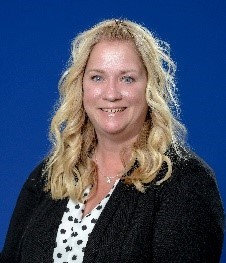
Implementing A Glycemic Management Protocol With Surgical Patients
Abstract
Surgical site infections (SSIs) are one of the costliest healthcare acquired infections in hospital settings as they impact length of stay, patient outcomes, and hospital reimbursement. A recent increase in SSIs at a Midwestern community hospital gained the attention of the organizational leadership and spurred an initiative to decrease the SSI rates. The project team developed a foreground/background and targeted PICOT question to guide review of the literature. Based on the results of the inquiry, an intervention targeting glycemic management of all surgical patients except obstetrics and surgical patients under 16 years of age was implemented as part of an evidence-based SSI prevention bundle. The project team chose the Iowa Model of Evidence-Based Practice to Promote Quality Care as the model for guiding the professional practice change. Using Lewin’s Change Theory as a framework, the project lead provided education to the surgical staff including pre-operative, post-operative, certified registered nurse anesthetists, and patient care assistants on stress hyperglycemia and glycemic management. Implementation of a glycemic management protocol for surgical patients began mid-November 2020. The goal was to improve hyperglycemia rates in this population of patients and assist in improving SSI rates. Data revealed that approximately 9% of patients had glucose values at or above 140mg/dL and required intervention. Standardized infection ratio (SIR) rates decreased on colorectal, total knee replacements and coronary artery bypass grafts, abdominal hysterectomy rates were unchanged, and total knee replacement rates increased after implementation. This evidence-based quality improvement project demonstrated a correlation between glycemic management in surgical patients and surgical site infection rates and improved patient outcomes.
EDUCATION CONSULTANT, PROFESSIONAL PRACTICE
CINCINNATI CHILDREN'S
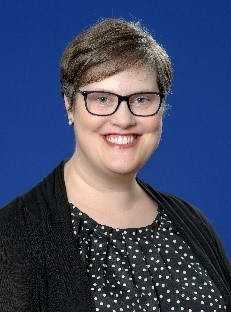
Hematology/Oncology Unit Champions Promote Care Plans for CLABSI Prevention
Abstract
Despite ongoing central line-associated bloodstream infection (CLABSI) prevention strategies at the project site, CLABSI rates in the hematology/oncology unit were elevated in the fall of 2019. A clinical question was developed to address this problem. Following a systematic search of the literature and subsequent critical appraisal of 29 articles, a strong recommendation was made for the inclusion of unit champions, education, and coaching in the design of any quality improvement initiatives for CLABSI reduction. An evidence-based quality improvement project was designed to improve CLABSI rates and bundle compliance in the hematology/oncology unit by leveraging unit champions in the implementation of a Vascular Access Care Plan for patients at high risk for CLABSI (watchers). An auditing tool was used to track watchers and those with a Vascular Access Care Plan during biweekly rounding. K card data (coaching tool) was used to monitor learning opportunities and the percentage of watchers with identified mitigation strategies. CLABSI rates were 0.31 during the evaluation period compared to 0.79 per 1000 line days during the previous fiscal year. Care plan usage improved to 100% of watchers with a care plan by the end of the evaluation period. There was an increase of 16% in the identification of watchers and 9.3% in tier II mitigation strategies for watchers identified on K cards. Learning opportunities and coaching moments were high during the evaluation period. Unit champions were key to implementing and sustaining an EBP-QI initiative and should be leveraged for other quality improvement initiatives to improve patient care at the project site.
SYSTEM DIRECTOR, AMBULATORY NURSING - CONTINUUM OF CARE
MERCY HEALTH
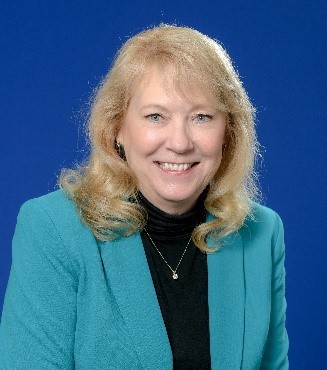
Remote Home Blood Pressure Monitoring for Management of Hypertension
Abstract
Remote home blood pressure (BP) monitoring has the potential to improve patient engagement and adherence with the prescribed treatment plan for managing hypertension. This DNP project examined the effects of daily remote BP measurement using transmission of biometric data through a Bluetooth-equipped device paired to participants’ smartphones. Twelve adults, with an age range of 37 to 69 years, completed four weeks of daily BP measurements and communicated via text, telephone call, or video visit with care team members to discuss the plan of care and address any concerns. A Wilcoxon signed-ranks test was performed to determine the magnitude of difference between the week 1 and week 4 systolic and diastolic BP measurements. The results revealed Week 4 systolic BPs (M = 127, SD = 12.48) were significantly lower than the Week 1 systolic BPs (M = 136, SD = 12.48), W = -2, p = .004 and the Week 4 diastolic BPs (M = 82, SD = 10.97) were significantly lower than the Week 1 diastolic BPs (M = 89, SD = 9.92), W = -4, p = .006.
This average systolic decrease of 9 mmHg and average diastolic decrease of 7 mmHg indicated success in lowering BP within a four-week timeframe. The clinical management of a chronic condition such as hypertension is a long-term process, but the findings of this DNP project supported the empirical evidence showing that remote BP monitoring improves patient outcomes.
STUDENT PROFILE
Ashley is a single mother with three children: 6, 8 and 11 years old.
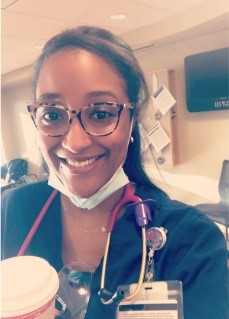
What was your journey that brought you to the MAGELIN program? I always wanted to be a nurse. I started in pre-nursing at UC but didn’t get admitted to the clinical nursing program. I changed majors to public health and worked for 10 years in that arena. I started asking myself what I was truly here to do? I changed jobs to work at UC Health and a nurse highly recommended the MAGELIN program so I applied.
What are your career goals?
I am passionate about mental health and helping people advocate for themselves. I want to teach nursing someday.
Tell us about the organization you created - Black Women Cultivating Change?
I am the Founder and CEO. The mission of the organization is to empower women to change the narrative by giving them the tools needed to live both happy and healthy lives. I recently directed a documentary named BOSS: Bravely Overcoming Self-Sabotage. The documentary explores “imposter syndrome” – a set of self-defeating behaviors including feelings of doubt and inadequacy, that can produce negative outcomes impacting self-esteem, relationships and careers.
https://www.blackwomencultivatingchange.com/
Do you have advice for students interested in nursing?
MSJ NURSING IN TANZANIA
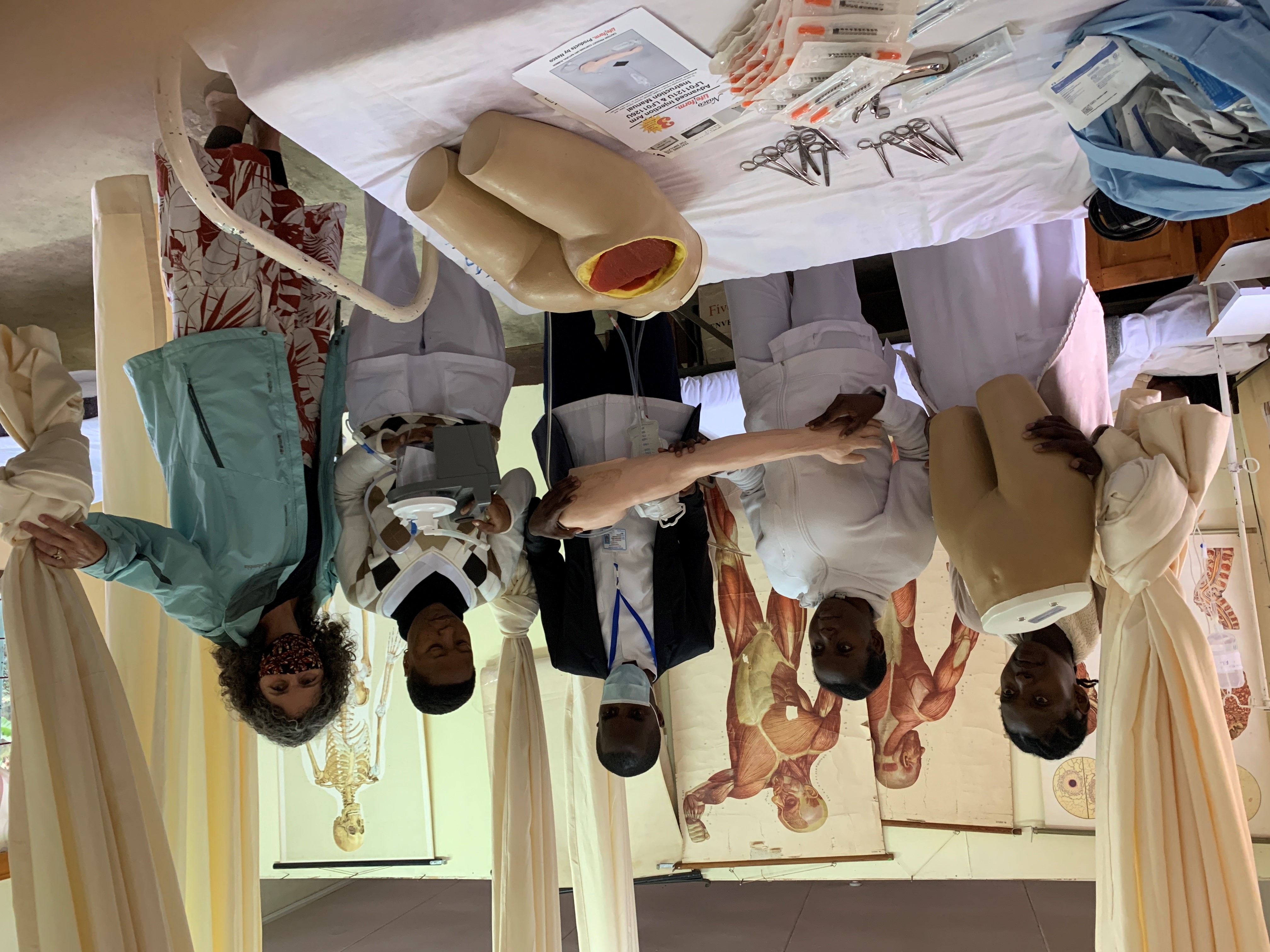
Wouldn’t it be exciting if MSJ could impact nursing students in a developing country? Recently, MSJ took advantage of just such an opportunity. Julie Rentz from Kilimanjaro Mission of Hope and Outreach (KMHO) traveled to Tanzania this past summer carrying equipment donated by MSJ’s Department of Nursing. Cindy Needham, MSJ nursing faculty and skills lab coordinator, identified equipment that was outdated by US standards but still used around the world to donate. Julie spent one month visiting 38 schools in the Catholic Diocese of Moshi at the base of Mount Kilimanjaro. Two of the schools were nursing colleges where students study for three years to earn a diploma in Nursing and Midwifery. Both Kibosho College (293 students) and Huruma College (266 students) were excited to receive equipment such as the nasal suctioning machine and venipuncture and injection training arms. The instructors were thrilled that their students would be able to practice IV and blood draws on such realistic models, where the skin can roll while palpating the vein and flashback can be seen. They began using them in their practicals the next day. MSJ’s Biology Department also contributed to Moshi schools with the donation of three research-grade microscopes which they were also lacking.
Less than 50% of young people in Tanzania graduate from high school. Fewer still go on to college. KMHO, a 501(c)(3) organization begun by the Moshi Diocese, provides opportunities for people in the US to make a difference in the lives of Tanzanian students, their families, and their communities through sponsorship of higher education. For more information, go to https://www.kmho.org/sponsorships/students.


